- Home
- Tom Clancy
Marine: A Guided Tour of a Marine Expeditionary Unit tcml-4 Page 22
Marine: A Guided Tour of a Marine Expeditionary Unit tcml-4 Read online
Page 22
Even better things were to follow. With the Sea Harrier, the Royal Navy had already demonstrated that it was possible to fit a radar in the Harrier's nose. With the Harrier II Plus, McDonnell Douglas engineers did not just settle for a simple range-only or air-search radar. They essentially redesigned the airframe to accommodate the powerful Hughes APG-65, the same multi-mode radar used on the F/A-18 Hornet. This means that in the fall of 1996, the Harrier force will add the mighty AIM-120 AMRAAM missile to their weapons suite, making it one of the most dangerous birds in the sky. Since the radar adds some 900 lb/408 kg of weight, and extends the airframe by 17 in./43 cm, a completely new fuselage was fabricated, and a new engine installed. The last twenty-four production Harrier IIs were built to the Plus standard. After that, additional aircraft will be "remanufactured." To save money, the wing, tail surfaces, landing gear, ejection seats, and other major components of existing AV-8 Bs are being recycled to produce a new aircraft, at about two-thirds the cost of manufacturing a completely new aircraft. Italy (sixteen aircraft) and Spain (eight aircraft) are sharing in the development cost and production of the Harrier II Plus, under an agreement signed in September 1990. The Marine Corps plans to remanufacture seventy-three airframes to the II Plus configuration. The first Harrier II Plus made its inaugural flight on September 22nd, 1992.
Harriers will remain in service with the Marines well into the 21st century. Most likely, they will gradually be replaced sometime after 2010 by a variant of the Air Force/Navy STOVL joint strike fighter (JSF), which is currently in the early stages of development. Between now and then, the variety of weapons loads and mission capabilities are due to greatly increase. For example, there will soon be a competition for a laser targeting/designation pod for the centerline stores station, which will allow the Harrier to employ laser guided bombs and missiles by itself.
Pioneer Unmanned Aerial Vehicle (UAV)
They used to be called "drones" or "remote controlled" (R/C) aircraft. Today we call them UAVs ("unmanned aerial vehicles") to emphasize that they operate without a human pilot on board. The idea of a pilotless aircraft makes many pilots feel uneasy. ("This machine wants your job… and it might cause a mid-air.") Since pilots become the Generals and Admirals who call the shots in military aviation, UAVs have had to overcome deeply entrenched institutional resistance to win acceptance. All the same, the advantages of a UAV are obvious. For one thing, compared to a manned aircraft, it can be made very small and cheap. For another, advances in software and miniaturized electronics have made it possible to provide relatively "intelligent" autopilots. And the development of miniaturized video cameras in stabilized mountings ("steadicams") provides high-resolution imagery, day or night. Even if the enemy manages to shoot one down, it makes a lousy hostage.
A Pioneer Unmanned Aerial Vehicle (UAV) just before launch from the deck of a U.S. Navy ship. A small rocket motor ignites, powering the craft until the cruise motor takes over.
OFFICIAL U.S. NAVY PHOTO
In early 1996 the Pioneer is the only UAV operational with the U.S. Navy, Army, and Marine Corps. Pioneer was developed in the 1970s by Israel Aircraft Industries (IAI), and it played a key role in the 1982 Bekaa Valley air campaign, in which the Israeli Defense Forces utterly smashed Syria's advanced Soviet-made integrated air-defense system. In 1985, following our own miserable experience in Lebanon, Secretary of the Navy John Lehman ordered the immediate procurement of an off-the-shelf UAV, to be carried on board the newly reactivated and modernized Iowa-class battleships, where they were to be used for gunfire spotting, reconnaissance, and battle-damage assessment, which had so far been impossible in Lebanon. Pioneer won the competition, and entered service with the fleet late in 1986. The following year, the Marine Corps procured additional Pioneers to operate from LPDs or mobile ground bases. In 1991, during Operation Desert Storm, six Pioneer units deployed to the Persian Gulf, flying some 523 missions. One of these unmanned aircraft earned a unique place in aviation history when an Iraqi unit attempted to surrender to it.
Pioneer has a wingspan of 17 ft/5.2 m, and a length of 14 ft/4.3 m, Empty weight is only 2641b/120 kg, and maximum takeoff weight is 4291b/195 kg. A 26-hp 2-stroke piston engine drives the pusher-type wooden propeller, located between twin tail booms. The engine also drives an electrical generator to power the sensor package, flight controls, and data link. Pioneer can reach a ceiling of 15,000 ft/4,600 m, but missions are generally flown at 3.280 ft/1,000 m or less. Top speed is 110 kt/204 kph, but the normal cursing speed is 65 kt/120 kph. Mission endurance is around five hours, allowing a tactical mission radius of about 100 nm/185 km. Fuel capacity is 12 gal/49 L of 100-octane aviation gasoline, mixed with a small amount of motor oil. Pioneer breaks down easily into modular components for storage in rugged shipping containers, which the crews call "bird boxes." For shipboard operations, Pioneer requires a rocket-assisted takeoff, which needs very little deck space. For ground operation, there is a truck-mounted pneumatic catapult. At the end of a shipboard mission, Pioneer is flown into a nylon recovery net rigged on the fantail of the ship, like a big volleyball net. When a runway is available, it can make a normal takeoff or landing on its fixed tricycle landing gear.
Pioneer can carry one of two standard electro-optical payloads, either of which can be swapped out in about an hour. The day package includes a stabilized, turret-mounted monochrome video camera with a full zoom. A full-color camera has been proposed as an upgrade, trading off contrast for color information. Color might also require a data link with higher bandwidth. The night package includes a high-resolution FLIR system, which can zoom to fixed lengths, and can be switched between "white hot" and "black hot" display modes. The radio command and data link uses the spread-spectrum technique, which is highly resistant to jamming. Since Pioneer is constructed from lightweight composite materials, it has a very low radar cross-section. It is equipped with a standard Mode 3 IFF transponder, allowing friendly aircraft to track it and avoid airspace conflicts. The system software automatically displays the time and date, geographic coordinates, and range to target on the imagery transmitted over the data link. It also generates symbology showing the aircraft flight direction and attitude, similar to the HUD (Heads-Up Display) of a fighter aircraft, but much simpler.
Four Landing Assault Ships (LPDs) are currently equipped to operate Pioneer. A UAV detachment consists of about thirty personnel and five air vehicles. The control station is an air-conditioned shelter with separate consoles for the flight operator and the sensor operator, who work under the supervision of a mission commander. The flight operator hands off control of an aircraft to a remote Portable Control Station for landings and recovery. A tracking technician operates the tracking and communication system, which requires a pole antenna and a steerable dish antenna, which may be installed on the ship, or mounted on a light truck. A recording technician operates the videocassette recorders, which can feed their signals to other ships and ground stations.
Pioneer has suffered some reliability problems due largely to insufficient procurement of spare parts. In operation, Pioneers often suffer minor damage when they hit the recovery net, and the complex sensor packages demand highly skilled maintenance. Nevertheless, they have proven to be invaluable national assets. So much so that additional vehicles are about to be procured. The Pioneer system will continue to serve well into the 21st century. The prime contractor is Pioneer UAV, Inc., a joint venture of Israel Aircraft Industries and AAI Corporation, located in Hunt Valley, Maryland.
Bell-Textron UH-1N Twin Harvey
Every American war has its distinctive icons in our collective historical imagination. For the Civil War, it's the forage cap and the 12-pounder bronze smoothbore "Napoleon" cannon. For the Second World War, it's the Sherman tank and the GI helmet. For Vietnam it's the "boonie hat" and the Bell UH-1 helicopter. Officially it's called the Iroquois, because the Army insists that helicopters should be named after Indian tribes. But to the troops, it will always be simply the "Huey." Based on a
1955 Army design competition, the UH-1 made its maiden flight on October 22nd 1956. Over eleven thousand have been produced in a dozen major models and countless variants. In 1996 it remains in production around the world.
A Marine UH-1N assigned to the 26th MEU (SOC)'s HMM-264. The "IFOR" markings indicate that the unit was recently part of NATO's Bosnia "Implementation" Peacekeeping force.
JOHN D. GRESHAM
A major factor in the longevity of an aircraft design is the ability of the airframe to accommodate more powerful engines. No pilot worth his or her wings ever thinks an aircraft has enough thrust or lift. The initial batch of production Hueys had an anemic (by current standards) 700-hp Lycoming turboshaft engine. The current model has a pair of Pratt and Whitneys, each rated at 900 hp each, but with burst transmission power rating of up to 1,290 hp.
Originally intended as an angel of mercy for battlefield casualty evacuation, the Huey proved to be a jack-of-all-trades, providing a bird's-eye view of the battlefield for commanders and forward observers, ferrying troops in and out of hot landing zones, hauling cargo to mountaintop fire bases, and serving as a platform for door-mounted machine guns and rockets. Hueys are currently the only aircraft being used by all four services — the USAF still uses a small number for VIP transport, missile range safety, and support of remote missile silos. The first Huey designed for the Marine Corps was the UH-1E, which entered service with MAG-26 in February 1964. It was equipped with an uprated 1,400-hp engine, a rescue hoist, improved electronics, and a rotor brake (to lock the rotor in position, fore and aft, for shipboard parking).
The current Marine version is the UH-1N, which was introduced in 1971, of which 111 remain in inventory. The pilot and copilot are supplemented for combat missions by a pair of door gunners manning 7.62mm or .50-cal. machine guns. Their primary mission is to act as a command and control platform for MEF and MEU (SOC) commanders. To this end, a special communications package can be fitted to the Marine Huey for use by a task force commander. The Marines figure the current upgrade cost at $4.7 million. The big news about the Huey these days is the planned upgrade program, which will be combined with a similar upgrade for the AH-1W Cobra attack helicopter. Beyond that, current plans have the UH-1N serving until about 2020, when a command and control version of the new V-22 Osprey will probably take over the job.
Bell Textron AH-1W Cobra Attack Helicopter
"There were many airplanes, but it was the skinny bird that scared us the most."
— Iraqi POW Debriefed after Desert Storm
The Iraqis called it the "skinny bird." The Marines call it "Whiskey Cobra." "Whiskey" is the military phonetic code for the letter W. Whatever you call it, it's one of the most lethal and versatile flying machines on the battlefield, the Bell Textron AH-1 W Cobra. The origins of the attack helicopter can be traced back to the long, bloody colonial war in Algeria in the 1950s, where the French Army experimentally rigged guns up to 20mm to their light Alouette helicopters. In Vietnam, the U.S. Army carried out similar experiments with automatic weapons and rocket pods on various models of the Huey. It soon became obvious that hitting a moving target from a moving helicopter required some kind of fire-control system more sophisticated than the Mark 1 human eyeball. It was also clear that the workload of flying a helicopter, especially when people on the ground were shooting back, made it necessary to divide the combat tasks between a pilot and a gunner. As helicopter losses mounted, it was also clear that to survive, a gunship would need to present the smallest possible target, and carry as much protective armor as the engine(s) could lift.
A Marine AH-1W Cobra attack helicopter of HMM-264 conducts a low-level run during an exercise at Camp Lejeune, N.C.
JOHN D. GRESHAM
The result was the Army's original AH-1G Cobra (Army aviators call it "The Snake"). This used the engine, transmission, and rotor of the Huey, installed in a very narrow fuselage, with a gunner seated in the forward cockpit and the pilot seated behind and above him. Two stub wings provided mounting points for rockets and machine-gun pods, and a nose-mounted turret provided room for a machine gun, or 40mm grenade launcher. The Marines were sufficiently impressed with the new birds to ask for the loan of thirty-eight Army Cobras, which were pressed into service for Vietnam. Experience with these early Cobras convinced Marine aviators that they needed more power, which meant a second engine. Shipboard operation also required adding a rotor brake, which locked the rotor in the fore-and-aft position for reduced stowage space. Designated the AH-1J Sea Cobra, the aircraft was upgunned with a three-barrel rotary 20mm cannon mounted in a power-driven chin turret, allowing the gunner to fire on targets up to 110deg off the nose.
The Sea Cobra entered service in 1971 with HMA-269, and sixty-nine aircraft were eventually delivered. An improved version, designated AH-1T was stretched 3 ft, 7 in./ 1.1 m to provide additional internal fuel. It was also equipped to launch the TOW antitank missile. This led to the ultimate Cobra design, the AH-1W "Super Cobra," which entered service early in 1986, powered by two GE T700 engines rated at 1,690 hp each. Maximum level speed is 175 kt/320 kph, and the maximum range with internal fuel is 395 mi/636 km. The Whiskey Cobra has a laser range finder and stabilized optical system mounted in the nose, carries chaff and flare launchers, and has a "Black Hole" IR signature-suppression system that mixes outside air with the hot engine exhaust. Up to eight TOW or Hellfire missiles can be carried. The stub wings can even be fitted with launch rails for the AIM-9 Sidewinder, enabling Cobra to engage enemy helicopters or aircraft. By 1996, over one hundred new aircraft had been delivered, while more than 42 older "-1T" birds have been upgraded to the AH-1 W configuration. They serve with six operational squadrons and a training unit, HMT-303 at Camp Pendleton, California.
During Desert Storm, the typical weapons load was a pair of LAU-68 rocket pods on the inboard pylons, with anti-tank missiles outboard. Marine Cobras played a key role in the battle of Khafji, decimating Iraqi armor. One Marine commander watched in amazement as an Iraqi artillery round detonated directly underneath a hovering Cobra. The helicopter shuddered and continued its mission. Despite sand-storms and salt fog, the Super Cobra maintained a 92 % mission-readiness rate, 24 % better than the Army's more complex (and much better publicized) AH-64A Apache, which required continuous support by civilian contractor technicians.
Current plans for upgrading the Whiskey Cobra will extend the service life of the fleet until at least 2020. One goal is to achieve commonality of engine, transmission, and other systems between the AH-1W and the UH-1N, thereby reducing maintenance costs and spare parts inventories. Key changes will include a new composite four-bladed rotor for improved agility and lower noise and vibration levels, an improved night-targeting system (NTS) based on an Israeli design, and numerous digital cockpit display improvements to reduce the pilot and gunner workload. The NTS system is designed to provide Marine Cobra crews with the same kind of FLIR and laser-designation system that is carried by the AH-64A Apache and OH-58D Kiowa Warrior. This means that it will be able to self-designate for delivery of Hellfire missiles, or even Paveway laser-guided bombs. By the time the program is completed, it will mean that the Cobra fleet will remain viable into the second decade of the 21st century. By that time, an attack version of the V-22 Osprey is a likely development, and may finally replace this classic warbird.
Boeing Vertol CH-46E Sea Knight
In the late 1940s, a visionary group of young Marine officers began to explore the possibilities that rapidly evolving helicopter technology offered for amphibious assault. They called the new concept "vertical envelopment." As the main landing force came ashore over the beach, small helicopter-borne detachments would seize key terrain and blocking positions deep behind the enemy's coastal defenses. Something like this had been tried with parachute and glider-borne infantry in the Normandy invasion, but the confused and scattered night drop had nearly turned into a disaster. During the Korean War, the small numbers of fragile piston-engined helicopters available had proved the
ir value in medical evacuation of the injured and battlefield observation for commanders. But it took the development of helicopters powered by turbine engines in the early 1960s to make the dream of vertical envelopment a reality.
A Marine CH-46E Sea Knight transport helicopter of HMM-264 gets ready for engine start on the deck of the USS Wasp (LHD-1). Also known as the "Bullfrog," this elderly bird will be replaced in the 21st century by the MV-22B Osprey tilt-motor transport.
JOHN D. GRESHAM
Forbidden to operate its own fixed-wing armed aircraft, the U.S. Army adopted helicopters enthusiastically, developing a doctrine called airmobile warfare. It was an expensive way to fight a war, though. By one estimate, over four thousand American helicopters were shot down in Vietnam while practicing airmobile warfare. One of the helicopters very much present in Vietnam was the CH-46E, the now-aging workhorse of Marine helicopters. "Sea Knight" may be the official nickname, but Marines call them Bullfrogs. The aircraft entered service with Marine Medium Helicopter (HMM-265) in June 1964. The Navy and Marine Corps procured a total of 624 units, which served through the Vietnam War and in every Marine operation since then. Production ended in 1977, and the current inventory is 242 aircraft. Despite the best maintenance and several service-life extensions, these machines are quite simply worn out. They continue in service today with 15 HMMs, for lack of any replacement. However, when the V-22 Osprey finally enters service they will be retired rapidly.

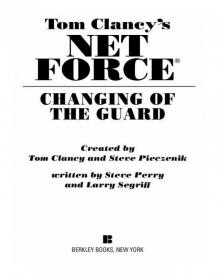 Changing of the Guard
Changing of the Guard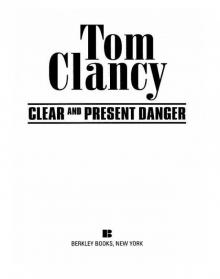 Clear and Present Danger
Clear and Present Danger Hounds of Rome
Hounds of Rome Breaking Point
Breaking Point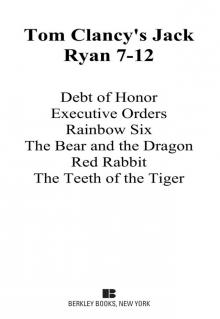 Tom Clancy's Jack Ryan Books 7-12
Tom Clancy's Jack Ryan Books 7-12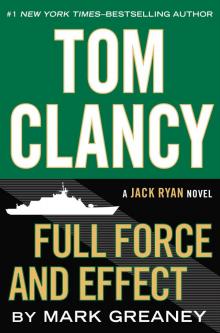 Full Force and Effect
Full Force and Effect The Archimedes Effect
The Archimedes Effect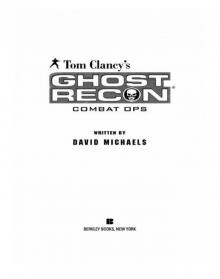 Combat Ops
Combat Ops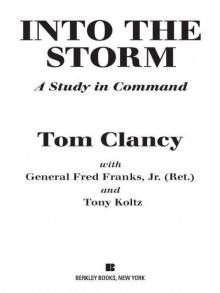 Into the Storm: On the Ground in Iraq
Into the Storm: On the Ground in Iraq Under Fire
Under Fire Point of Impact
Point of Impact Red Rabbit
Red Rabbit Rainbow Six
Rainbow Six The Hunt for Red October
The Hunt for Red October The Teeth of the Tiger
The Teeth of the Tiger Conviction (2009)
Conviction (2009)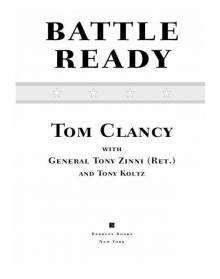 Battle Ready
Battle Ready Patriot Games
Patriot Games The Sum of All Fears
The Sum of All Fears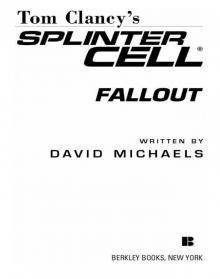 Fallout (2007)
Fallout (2007) Red Storm Rising
Red Storm Rising The Cardinal of the Kremlin
The Cardinal of the Kremlin Executive Orders
Executive Orders Lincoln, the unknown
Lincoln, the unknown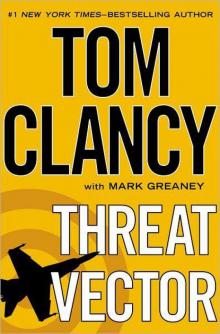 Threat Vector
Threat Vector The Hunted
The Hunted Shadow Warriors: Inside the Special Forces
Shadow Warriors: Inside the Special Forces End Game
End Game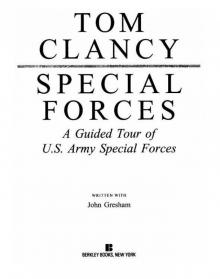 Special Forces: A Guided Tour of U.S. Army Special Forces
Special Forces: A Guided Tour of U.S. Army Special Forces Locked On
Locked On Line of Sight
Line of Sight Tom Clancy Enemy Contact - Mike Maden
Tom Clancy Enemy Contact - Mike Maden Fighter Wing: A Guided Tour of an Air Force Combat Wing
Fighter Wing: A Guided Tour of an Air Force Combat Wing Springboard
Springboard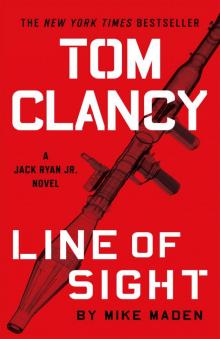 Line of Sight - Mike Maden
Line of Sight - Mike Maden EndWar
EndWar Dead or Alive
Dead or Alive Tom Clancy Support and Defend
Tom Clancy Support and Defend Checkmate
Checkmate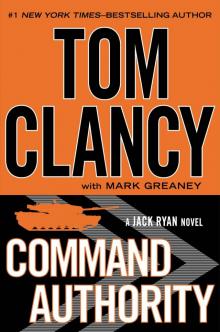 Command Authority
Command Authority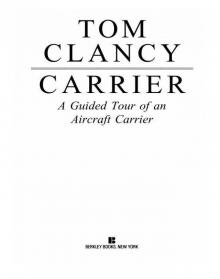 Carrier: A Guided Tour of an Aircraft Carrier
Carrier: A Guided Tour of an Aircraft Carrier Blacklist Aftermath
Blacklist Aftermath Marine: A Guided Tour of a Marine Expeditionary Unit
Marine: A Guided Tour of a Marine Expeditionary Unit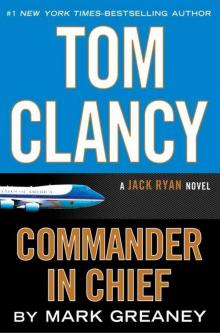 Commander-In-Chief
Commander-In-Chief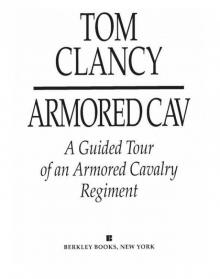 Armored Cav: A Guided Tour of an Armored Cavalry Regiment
Armored Cav: A Guided Tour of an Armored Cavalry Regiment Tom Clancy's Jack Ryan Books 1-6
Tom Clancy's Jack Ryan Books 1-6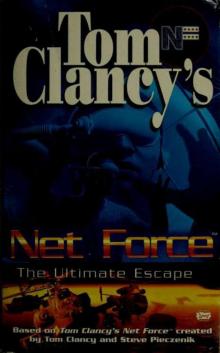 The Ultimate Escape
The Ultimate Escape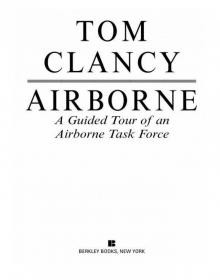 Airborne: A Guided Tour of an Airborne Task Force
Airborne: A Guided Tour of an Airborne Task Force Debt of Honor
Debt of Honor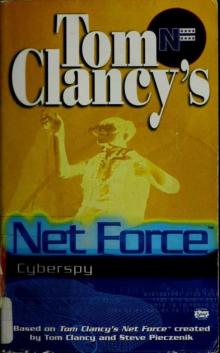 Cyberspy
Cyberspy Point of Contact
Point of Contact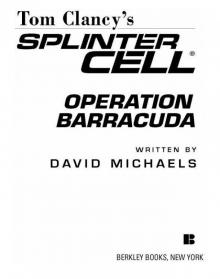 Operation Barracuda (2005)
Operation Barracuda (2005)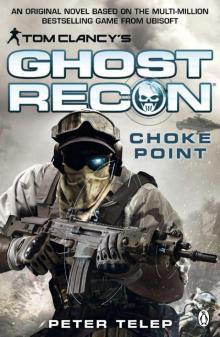 Choke Point
Choke Point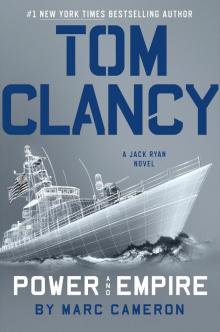 Power and Empire
Power and Empire Every Man a Tiger: The Gulf War Air Campaign
Every Man a Tiger: The Gulf War Air Campaign Endgame (1998)
Endgame (1998)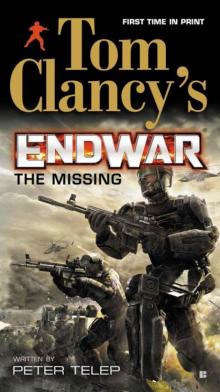 EndWar: The Missing
EndWar: The Missing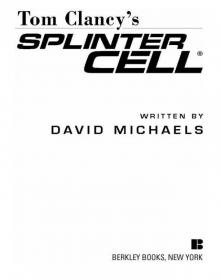 Splinter Cell (2004)
Splinter Cell (2004) The Great Race
The Great Race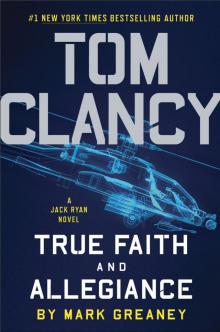 True Faith and Allegiance
True Faith and Allegiance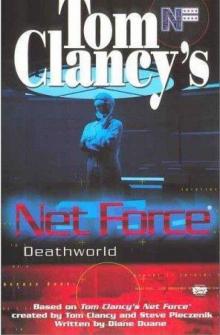 Deathworld
Deathworld Ghost Recon (2008)
Ghost Recon (2008)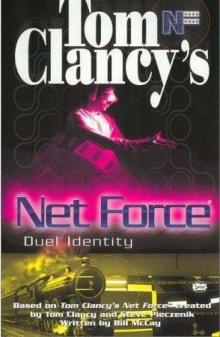 Duel Identity
Duel Identity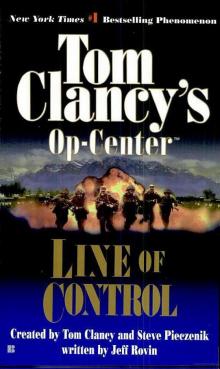 Line of Control o-8
Line of Control o-8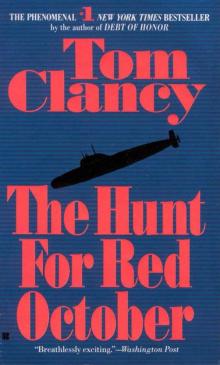 The Hunt for Red October jr-3
The Hunt for Red October jr-3 Hidden Agendas nf-2
Hidden Agendas nf-2 Acts of War oc-4
Acts of War oc-4 Ruthless.Com pp-2
Ruthless.Com pp-2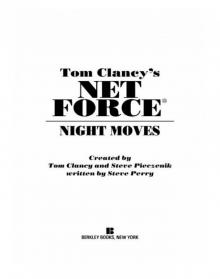 Night Moves
Night Moves The Hounds of Rome - Mystery of a Fugitive Priest
The Hounds of Rome - Mystery of a Fugitive Priest Into the Storm: On the Ground in Iraq sic-1
Into the Storm: On the Ground in Iraq sic-1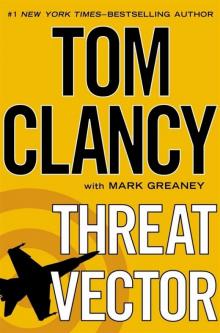 Threat Vector jrj-4
Threat Vector jrj-4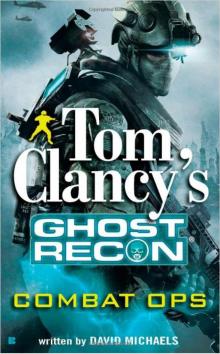 Combat Ops gr-2
Combat Ops gr-2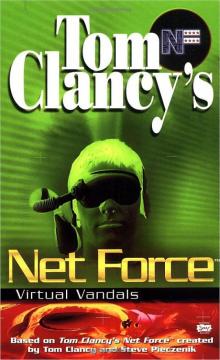 Virtual Vandals nfe-1
Virtual Vandals nfe-1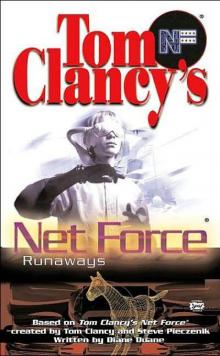 Runaways nfe-16
Runaways nfe-16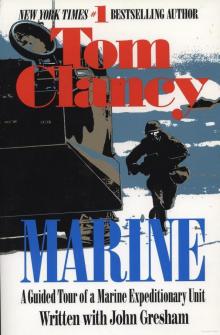 Marine: A Guided Tour of a Marine Expeditionary Unit tcml-4
Marine: A Guided Tour of a Marine Expeditionary Unit tcml-4 Shadow Warriors: Inside the Special Forces sic-3
Shadow Warriors: Inside the Special Forces sic-3 Jack Ryan Books 1-6
Jack Ryan Books 1-6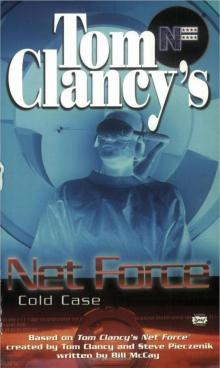 Cold Case nfe-15
Cold Case nfe-15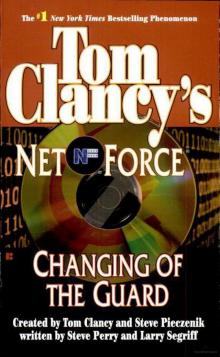 Changing of the Guard nf-8
Changing of the Guard nf-8 Splinter Cell sc-1
Splinter Cell sc-1 Battle Ready sic-4
Battle Ready sic-4 The Bear and the Dragon jrao-11
The Bear and the Dragon jrao-11 Fighter Wing: A Guided Tour of an Air Force Combat Wing tcml-3
Fighter Wing: A Guided Tour of an Air Force Combat Wing tcml-3 Patriot Games jr-1
Patriot Games jr-1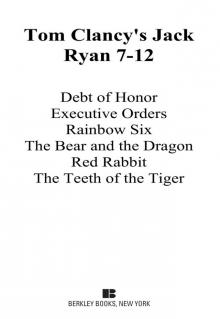 Jack Ryan Books 7-12
Jack Ryan Books 7-12 Mission of Honor o-9
Mission of Honor o-9 Private Lives nfe-9
Private Lives nfe-9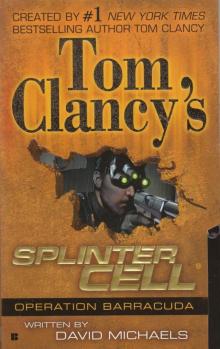 Operation Barracuda sc-2
Operation Barracuda sc-2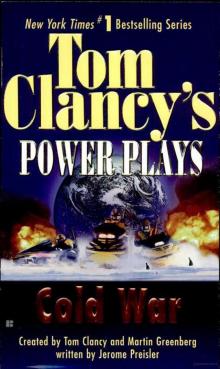 Cold War pp-5
Cold War pp-5 Point of Impact nf-5
Point of Impact nf-5 Red Rabbit jr-9
Red Rabbit jr-9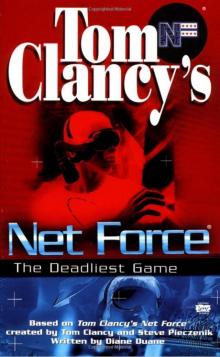 The Deadliest Game nfe-2
The Deadliest Game nfe-2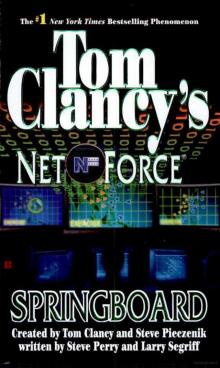 Springboard nf-9
Springboard nf-9 Safe House nfe-10
Safe House nfe-10 EndWar e-1
EndWar e-1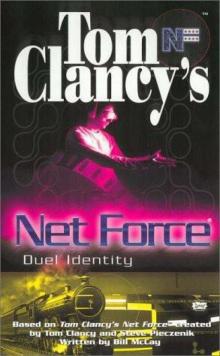 Duel Identity nfe-12
Duel Identity nfe-12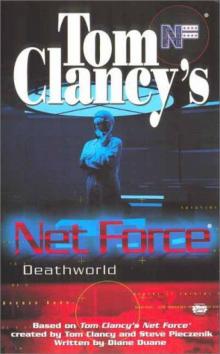 Deathworld nfe-13
Deathworld nfe-13 Politika pp-1
Politika pp-1 Rainbow Six jr-9
Rainbow Six jr-9 Tom Clancy's Power Plays 1 - 4
Tom Clancy's Power Plays 1 - 4 Endgame sc-6
Endgame sc-6 Executive Orders jr-7
Executive Orders jr-7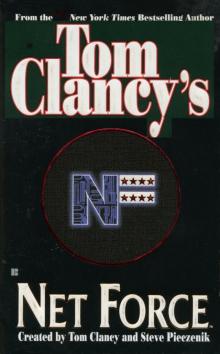 Net Force nf-1
Net Force nf-1 Call to Treason o-11
Call to Treason o-11 Locked On jrj-3
Locked On jrj-3 Against All Enemies
Against All Enemies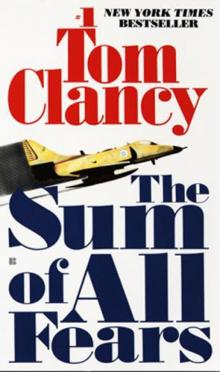 The Sum of All Fears jr-7
The Sum of All Fears jr-7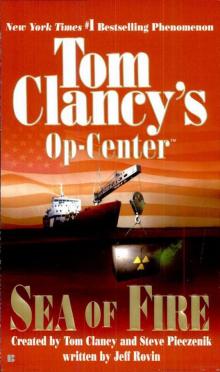 Sea of Fire o-10
Sea of Fire o-10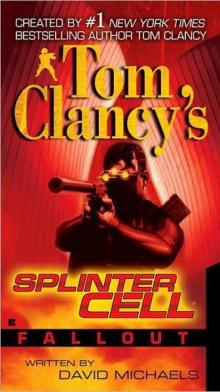 Fallout sc-4
Fallout sc-4 Balance of Power o-5
Balance of Power o-5 Shadow Watch pp-3
Shadow Watch pp-3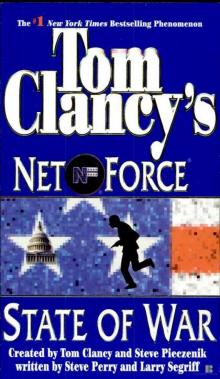 State of War nf-7
State of War nf-7 Wild Card pp-8
Wild Card pp-8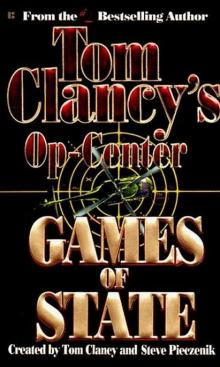 Games of State o-3
Games of State o-3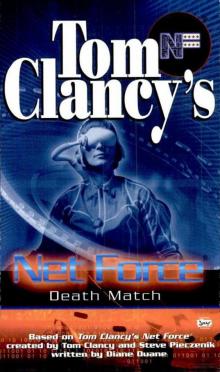 Death Match nfe-18
Death Match nfe-18 Against All Enemies mm-1
Against All Enemies mm-1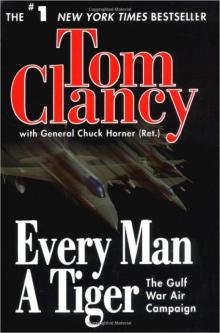 Every Man a Tiger: The Gulf War Air Campaign sic-2
Every Man a Tiger: The Gulf War Air Campaign sic-2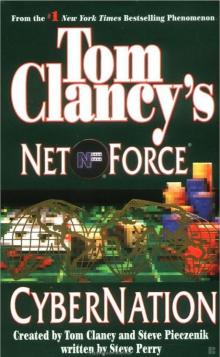 Cybernation nf-6
Cybernation nf-6 Support and Defend
Support and Defend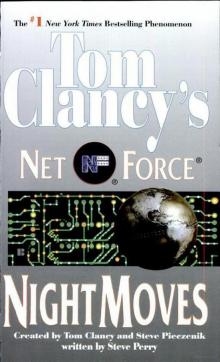 Night Moves nf-3
Night Moves nf-3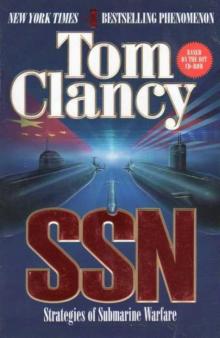 SSN
SSN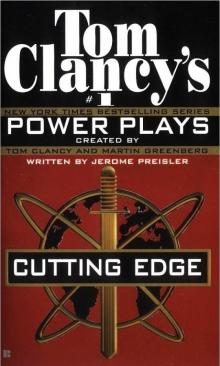 Cutting Edge pp-6
Cutting Edge pp-6 The Cardinal of the Kremlin jrao-5
The Cardinal of the Kremlin jrao-5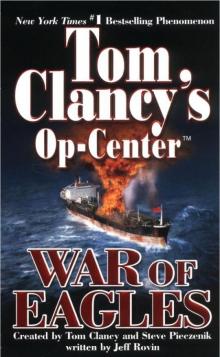 War of Eagles o-12
War of Eagles o-12 Op-Center o-1
Op-Center o-1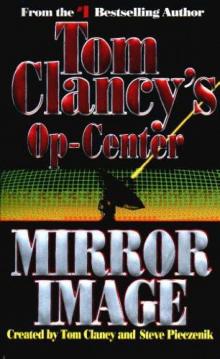 Mirror Image o-2
Mirror Image o-2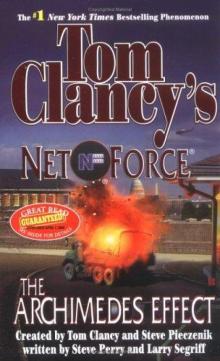 The Archimedes Effect nf-10
The Archimedes Effect nf-10 Teeth of the Tiger jrj-1
Teeth of the Tiger jrj-1 Bio-Strike pp-4
Bio-Strike pp-4 State of Siege o-6
State of Siege o-6 Debt of Honor jr-6
Debt of Honor jr-6 Zero Hour pp-7
Zero Hour pp-7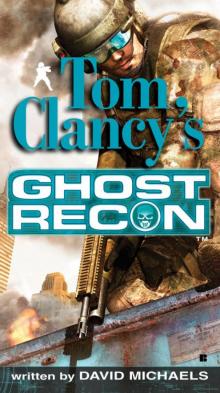 Ghost Recon gr-1
Ghost Recon gr-1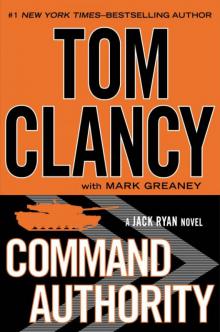 Command Authority jr-10
Command Authority jr-10 Tom Clancy's Power Plays 5 - 8
Tom Clancy's Power Plays 5 - 8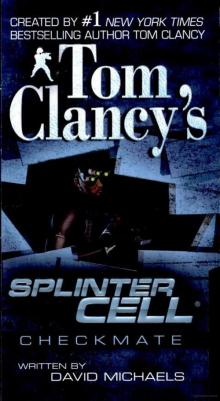 Checkmate sc-3
Checkmate sc-3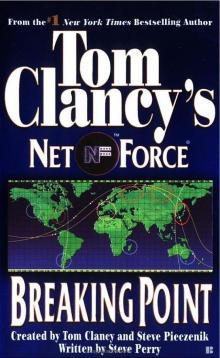 Breaking Point nf-4
Breaking Point nf-4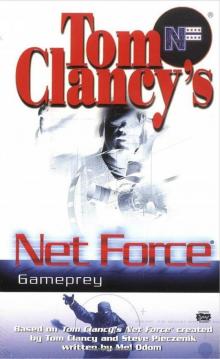 Gameprey nfe-11
Gameprey nfe-11 The Hunted e-2
The Hunted e-2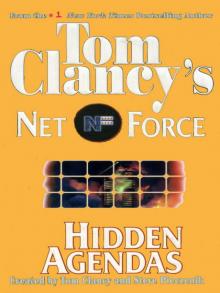 Hidden Agendas
Hidden Agendas Divide and Conquer o-7
Divide and Conquer o-7